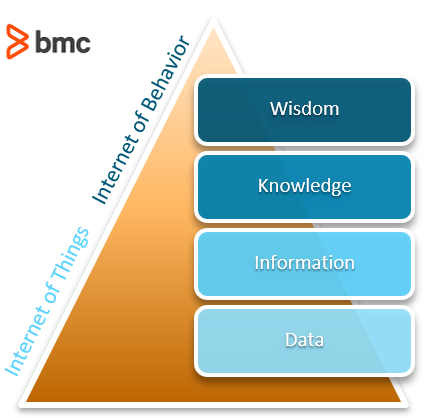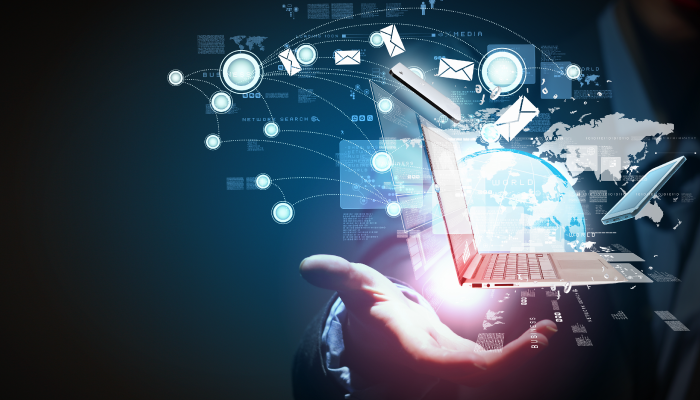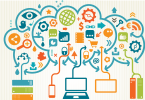A short definition of the internet of things (IoT) is a collection of small devices connected to the internet. The IoT takes the concept “internet” a step further, beyond most people’s use cases.
Thus far, the internet’s primary function is communication. The internet has allowed users to be more accessible to and connected with one another. Most people go to the internet to communicate and retrieve information. Users might login to email or social media accounts, which have the internet running so users can communicate and send pictures to one another. Users ask Google what is going on in the news. Users ask Yelp for information about a restaurant.
The IoT, now, extends this purpose—connection—to the non-human. The same internet technology that sends packets of information from one IP address to another, allowing humans to gather and send information, can similarly have small devices connected in order to gather and send information.
Let’s look at the way we’ve used things, even before the internet, and how that informs the ways the IoT might be used in the future.
A brief history of things
It has long been practice for people to place devices (things), gather information, and send signals from one point to another. In previous war times, when enemies would approach a kingdom, people on watch would set off a series of signals via flames or sounds to communicate with the decision makers that a threat was on the horizon.
Over time, institutions have used sensors, or small devices, but the technology that allowed the sensors to report back to a central service was through something like walking, fires, radio signals, cables, or, possibly, satellite. Now, the internet is the primary service on which all these sensors are able to communicate information back to its host.
The internet is abundant and easy to use. With a framework like this, it does not take as many resources to place a data-collecting device somewhere in the world and retrieve information from it. Signaling devices can grow in variety, beyond their mostly utilitarian purposes, and provide signals for many different use cases.
For example, weather alert systems are now very sophisticated. They monitor a region’s natural disasters, warning of oncoming earthquakes, tsunamis, hurricanes, tornadoes, and floods. After Colorado’s Big Thompson Flood, in 1976, a series of signals were installed to monitor the river elevations and communicate to the people living nearby when the river was dangerous. Similarly, most large United States cities now have sensors to signal to authorities when and where a gun was fired.
Today, we enter an era of small devices connected through the internet. The society known as the Internet of Things can grow rich as it moves into an era of pleasure and delight. Now, rather than having to walk to the rain gauge or answer the door in person or through an intercom, the rain gauge and the doorbell can be connected to the internet and send signals to a person’s phone.

The significance of the IoT
While there are funny use cases for catching signals through the IoT, there can be many, many beneficial use cases. Every industry operates in the same way: receiving a signal and making a decision. Every industry will benefit from putting its custom devices on the IoT in order to collect the necessary data to make more informed decisions about what to do and, more significantly, when to act.
There was talk of IoT in the early 2010s; all the pieces were there. People experimented with linking major home appliances like fridges and dryers to the internet of things. At the time, most of these connected devices were just fancy add-ons or novelties to distinguish a product from its competitors.
In 2020, the IoT is better prepared to thrive. IoT benefits greatly in the technological ecosystem of 2020:
- Storage is cheap.
- The Kubernetes architecture, made available around 2017, is available for managing both many and large computer tasks, removing the burden from server engineers (the focus shifts to cybersecurity).
- Machine learning techniques process and make use of large amounts of data.
- Google Cloud Platform, Amazon Web Services, and Microsoft Azure all have a band of people to manage these resources for a reasonable price.
In the 2020s, tech companies will be able to utilize the IoT and connect devices to provide a service, not just a novelty.
IoT devices get more creative
It will be exceedingly accessible to place a device on the internet and get more value from it. This means that people can get more creative—because the cost of failure is cheap.
As the IoT continues to grow, we get devices everywhere: on our refrigerators, in our cars, on our coffee mugs. Every revolving door, every subway turnstile can be a part of the Internet of Things. Small devices can be placed on tractors while spraying crops with pesticides that detect which plants need treatment. Other devices can be placed in the soil to measure moisture and temperature qualities of the soil.
We even get jokers and pranksters in the metaphorical kingdom. This company is devoted to the internet of useless things. They ideate devices like a smart bookmark that indicates what page you’re on or a wearing ring that sends a final tweet when your heart stops beating.
Finally, IoT devices get more sophisticated
Devices connected to the IoT will continue to evolve, offering more sophisticated uses. Adding simple sensors to the IoT is the low-hanging fruit for the industry. After sensors, devices connected through the IoT will be things more like our smartphones. They will be edge devices.
For example, there will be small computers that can handle simple computational tasks. On the IoT, these devices can allow computation to occur at the moment a signal is detected, and make decisions on the spot, rather than sending a signal to a primary server somewhere and wait for the response. This has increased security benefits because less information is passed back and forth from one party to another.
Computation remains fairly expensive. But IoT devices with stronger computers can be the answer to cheaper computation. As better and better computers get placed on IoT, distributed computing systems can be utilized. These distributed networks of computers can handle harder photo rendering tasks while live chatting with friends and family. They can train machine learning models on the fly, allowing a user to have a private ML model that assists in editing photos just the way a user likes.
It’s not hard to imagine the potential benefits the IoT can bring businesses. Of course, we may also wonder how the IoT might affect our own behaviors, too.
Related reading
- BMC Business of IT Blog
- BYOD Policies: Best Practices for Enterprise BYOD
- Structured vs Unstructured Data: A Shift in Privacy
- What Is Dark Data? The Basics & The Challenges
These postings are my own and do not necessarily represent BMC's position, strategies, or opinion.
See an error or have a suggestion? Please let us know by emailing blogs@bmc.com.






